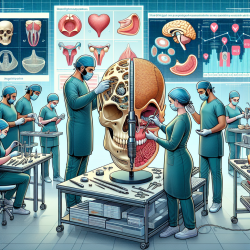Introduction
Depression is a pervasive mood disorder affecting millions globally, often leading individuals to seek various treatment modalities, including Complementary and Alternative Medicine (CAM). A recent systematic review, Complementary and alternative medicine recommendations for depression: a systematic review and assessment of clinical practice guidelines, sheds light on the integration of CAM in clinical practice guidelines for depression. This blog explores how practitioners can utilize these insights to enhance their practice and patient outcomes.
Understanding CAM and Its Role in Depression
CAM encompasses a diverse range of therapies not typically part of conventional medical care. These include herbal remedies, dietary supplements, physical therapies, and mindfulness practices. The systematic review highlights that up to 50% of individuals with depression use CAM therapies, underscoring the need for healthcare providers to be well-versed in these options.
Key Findings from the Systematic Review
The review assessed 19 clinical practice guidelines using the AGREE II instrument, focusing on the quality of CAM recommendations. Key findings include:
- 16 out of 19 guidelines made CAM recommendations.
- Quality varied significantly across guidelines, with CAM recommendations generally scoring lower than overall guideline recommendations.
- Only one guideline was recommended without modifications for both its overall and CAM sections.
Implications for Practitioners
For practitioners, these findings highlight the importance of using high-quality guidelines to inform CAM-related decisions. Guidelines with higher AGREE II scores can serve as a reliable resource for discussing CAM options with patients, fostering informed and shared decision-making.
Practitioners should consider the following strategies to enhance their practice:
- Stay Informed: Regularly review updated guidelines and research to stay informed about the latest evidence-based CAM therapies.
- Patient Communication: Engage in open discussions with patients about their CAM use, preferences, and the evidence supporting these therapies.
- Interdisciplinary Collaboration: Collaborate with CAM practitioners to ensure a holistic approach to patient care.
Encouraging Further Research
The review also emphasizes the need for more high-quality research to support CAM recommendations in clinical guidelines. Practitioners can contribute to this body of knowledge by:
- Participating in clinical trials and studies focused on CAM therapies.
- Documenting and sharing patient outcomes related to CAM use.
- Advocating for funding and support for CAM research initiatives.
Conclusion
Integrating CAM into depression treatment requires a nuanced understanding of available therapies and their evidence base. By leveraging high-quality guidelines and engaging in ongoing research, practitioners can enhance their practice and improve outcomes for patients with depression.
To read the original research paper, please follow this link: Complementary and alternative medicine recommendations for depression: a systematic review and assessment of clinical practice guidelines.










